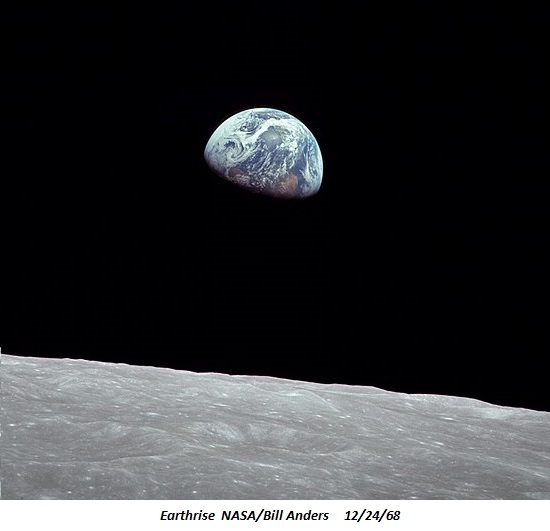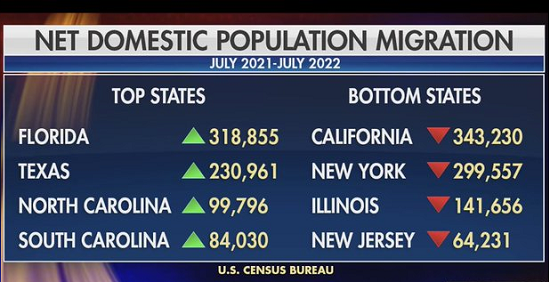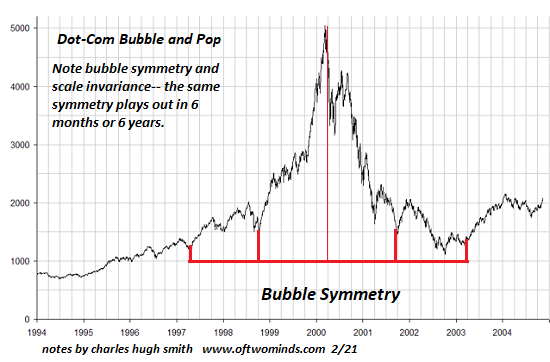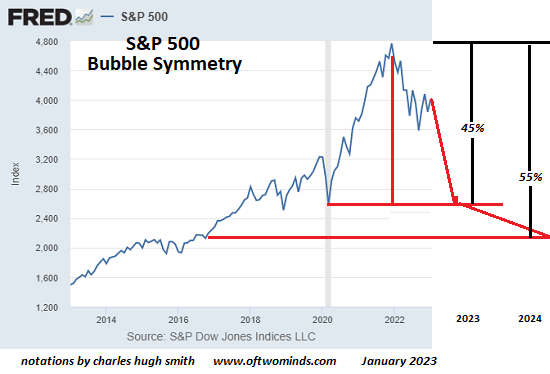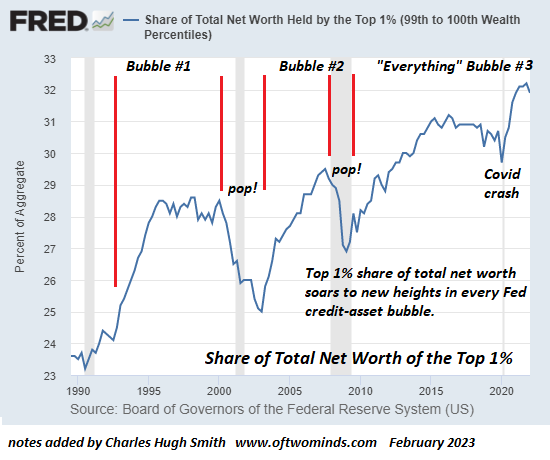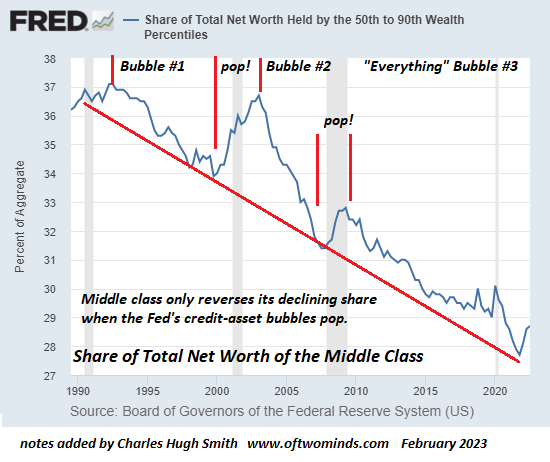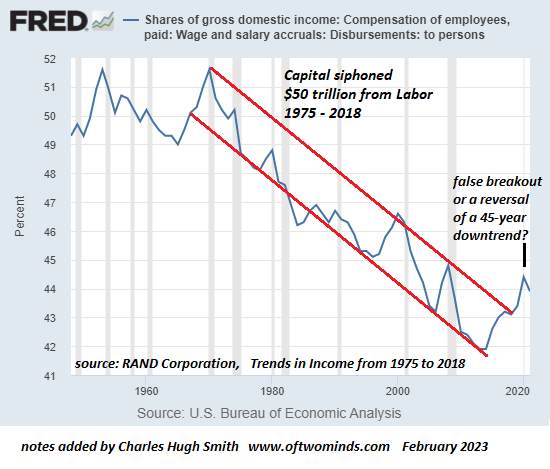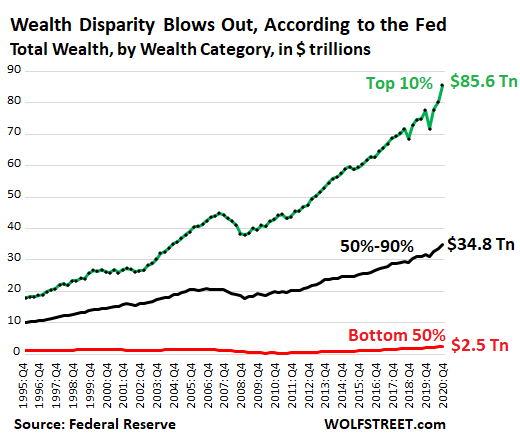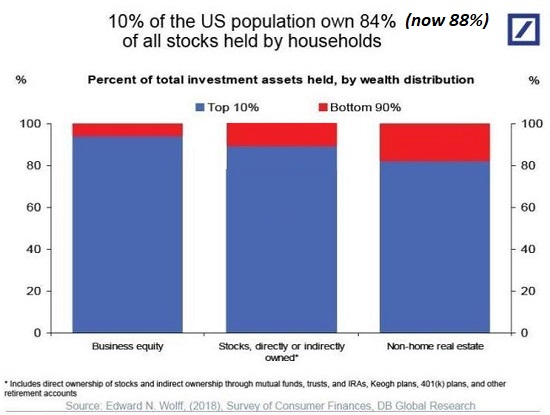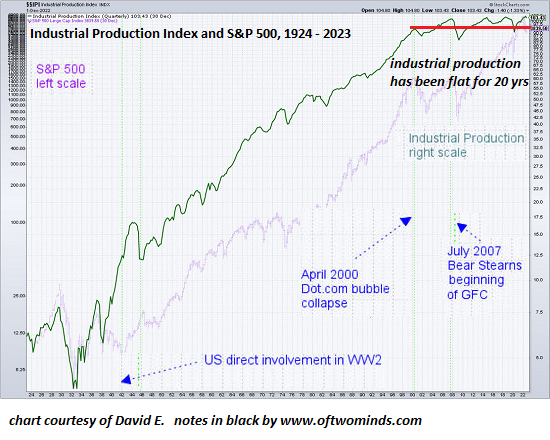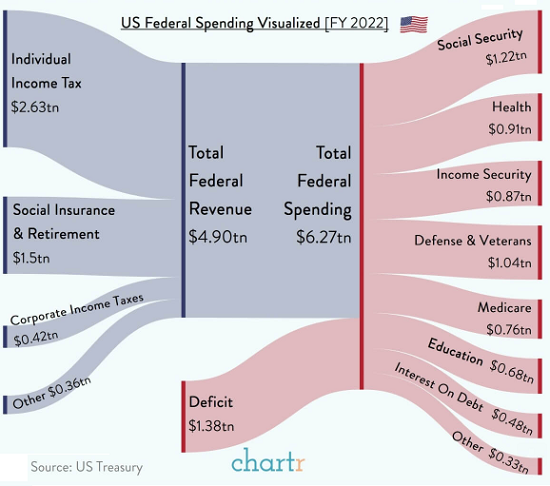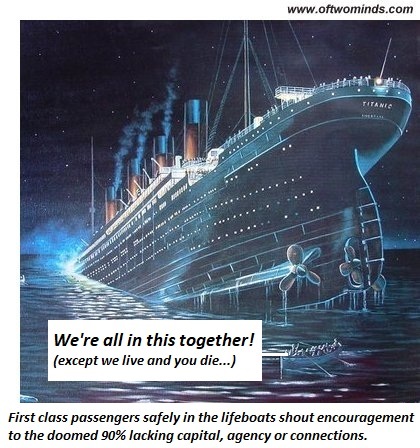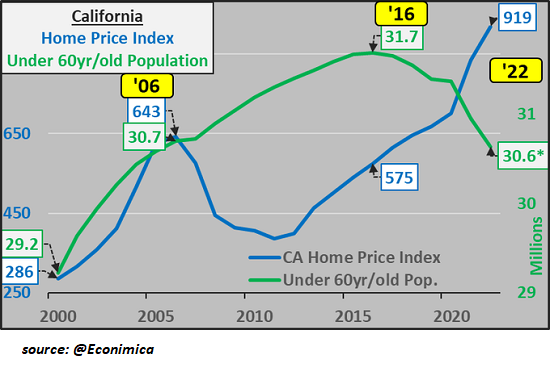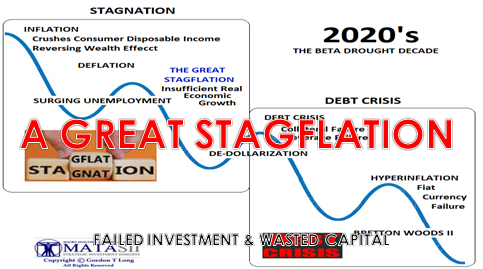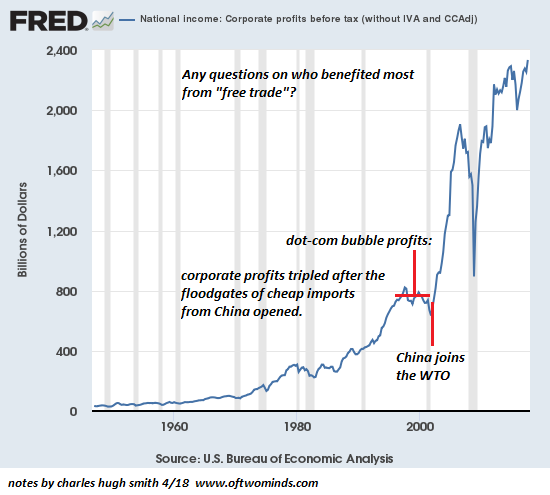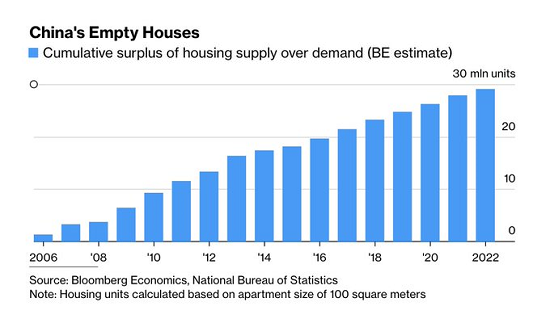Stainless Steal
The decay in quality reveals that the collapse of the neoliberal-hyper-financialization-hyper-globalization model
has already occurred.
I've often addressed the dismaying decline of quality over the past 30+ years, for example,
The "Crapification" of the U.S. Economy Is Now Complete (February 9, 2022).
I have attributed this to:
1) hyper-globalization, which pushes manufacturers to buy the cheapest components to lower costs. The failure of any one
poorly made component renders the entire device useless junk which is dumped in the landfill.
2) Planned obsolescence as the corporate strategy to boost profits in an economy where everyone already has everything.
By reducing the quality, product failure is accelerated, and the hapless consumer is forced to replace a device every few years
that 30 years ago would have provided decades of trouble-free service.
3) Consumers have been trained to consume, no matter how poor the quality. Tossing stuff in the landfill is
wonderful because this gives us another excuse to go shopping.
4) Since global production and distribution is dominated by rapacious cartels and quasi-monopolies,
they don't care about the terminal decay of the quality of their product/service. They know we're going to buy their
low-quality rubbish anyway because we have no choice, and they know the quality of "competing" (hahaha) products is
equally abysmal.
Longtime correspondent Bart D., who coined the term Landfill Economy, pointed out a fifth source of decaying
quality: resource
depletion. It's not just hyper-globalization / corporate profiteering driven cost reductions at the expense of
durability; it's also the increasing cost and difficulty of obtaining quality materials and components at any price.
Here are Bart's comments on "stainless steel":
"I found, what was for me, the most profound evidence of the ascendancy of the Fraud Economy that underpins the
Landfill Economy.
I found it in the term and substance 'stainless steel.'
I own some old and by the standards of the day in the 1970’s 'cheap' stainless steel knives and cutlery. I use a few of
these pieces as garden tools. They lay around in the dirt and weather 24-7 and 365 days a year. They are used for purposes
never intended by their manufacturers, uses that they would classify as abuse. And I can pick these items out of the dirt, rinse
them under a tap and they come up looking like new. They are shiny, silver and have no sign of rust.
And I also own some 'quality' stainless steel items that were manufactured in the last 5 years in China. They were not
priced in the 'Cheap and Nasty' bracket.
These items do nothing more than live in a kitchen or out under the pergola and get wet with clean water.
With Plain water.
And they rust.
Prolifically.
So it seems that since the 1970s, we have managed to figure out how to make Fraud Stainless at a price point above
actual stainless (inflation adjusted).
I have come to realise that we are now a VERY long way past 'Peak Quality' and Peak quality of life. And we seem to accept
this degradation as normal.
We are now living in a comprehensive illusion of what is quality. I'm starting to wonder if there are any products being
produced today that are genuinely superior to those produced 30+ years ago.
Advertising tells us that products are 'Premium,' but 40 years ago products with similar or superior specifications were
produced as 'cheap.' Todays standard grade products would be regarded as Defective in the economy of pre-1990s.
Why is this happening? Almost certainly it's a product of resource depletion and substitution of superior and fit-for-purpose
materials with inferior and faulty materials.
I have seen this also in copper pipe and road bitumen. The pre-90s versions of these products were durable and fit
for purpose … whatever watered down substitutes we use now are defective grade products that degrade quickly even
under normal working conditions.
I wonder how far quality can degrade before our economic model fails?
Maybe we're just arriving at the point of failure now?"
Thank you, Bart, for illuminating how stainless steel is now stainless steal: an ersatz simulation
that is pure fraud and theft. Claiming that a product that corrodes within months is actually
"stainless steel" is fraud, and given that consumers are paying premium prices for this fraudulent product, it
is also blatant theft: the consumer is paying a premium price for a product which is known by its manufacturer and
distributor to be defective / not the high-quality material that was promised.
Tossing all the low-quality goods in the landfill and replacing them with even lower quality goods is now the
global model of "growth." But since very few of the discarded goods have recyclable materials that are
actually recycled, this waste is growth model runs into limits of materials availability and cost: when even
low quality becomes too costly, the bottom 80% of consumers can no longer afford to buy replacements.
As I explain in my recenty books
Self-Reliance in the 21st Century and
Global Crisis, National Renewal, once the economies of scale of mass production are lost,
production is shut down as it is no longer profitable / viable at lower run-rates / capacity utilization.
Which brings us to Bart's projection of what happens on the downside of Peak Quality: when
the system can no longer replace all the low-quality goods dumped in the landfill with equivalent quantities of low-quality
replacements at affordable prices, the entire waste is growth model collapses.
The decay in quality reveals that the collapse of the neoliberal-hyper-financialization-hyper-globalization model
has already occurred. We're simply waiting for the second stage, where it's not just the production of quality
goods that collapses: the production of even low-quality goods tumbles off the cliff as
economies of scale are no longer enough to keep production profitable.
Stainless steal won't survive impact. Fraud and theft eventually catch up with
economies which have made them the centerpieces of "prosperity."
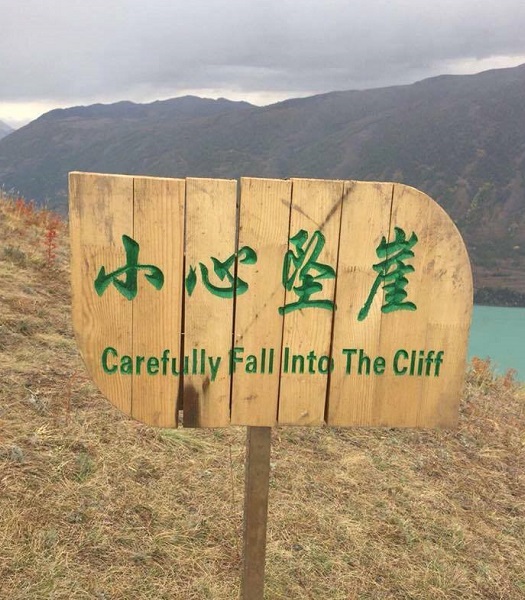
New Podcast:
Turmoil Ahead As We Enter The New Era Of 'Scarcity' (53 min)
 My new book is now available at a 10% discount ($8.95 ebook, $18 print):
Self-Reliance in the 21st Century.
My new book is now available at a 10% discount ($8.95 ebook, $18 print):
Self-Reliance in the 21st Century.
Read the first chapter for free (PDF)
Read excerpts of all three chapters
Podcast with Richard Bonugli: Self Reliance in the 21st Century (43 min)
My recent books:
The Asian Heroine Who Seduced Me
(Novel) print $10.95,
Kindle $6.95
Read an excerpt for free (PDF)
When You Can't Go On: Burnout, Reckoning and Renewal
$18 print, $8.95 Kindle ebook;
audiobook
Read the first section for free (PDF)
Global Crisis, National Renewal: A (Revolutionary) Grand Strategy for the United States
(Kindle $9.95, print $24, audiobook)
Read Chapter One for free (PDF).
A Hacker's Teleology: Sharing the Wealth of Our Shrinking Planet
(Kindle $8.95, print $20,
audiobook $17.46)
Read the first section for free (PDF).
Will You Be Richer or Poorer?: Profit, Power, and AI in a Traumatized World
(Kindle $5, print $10, audiobook)
Read the first section for free (PDF).
The Adventures of the Consulting Philosopher: The Disappearance of Drake (Novel)
$4.95 Kindle, $10.95 print);
read the first chapters
for free (PDF)
Money and Work Unchained $6.95 Kindle, $15 print)
Read the first section for free
Become
a $1/month patron of my work via patreon.com.
NOTE: Contributions/subscriptions are acknowledged in the order received. Your name and email remain confidential and will not be given to any other individual, company or agency.
|
Thank you, Guy T. ($50), for your magnificently generous contribution to this site -- I am greatly honored by your steadfast support and readership. |
Thank you, Andrew F. ($1/month), for your most generous pledge to this site -- I am greatly honored by your support and readership. |



















